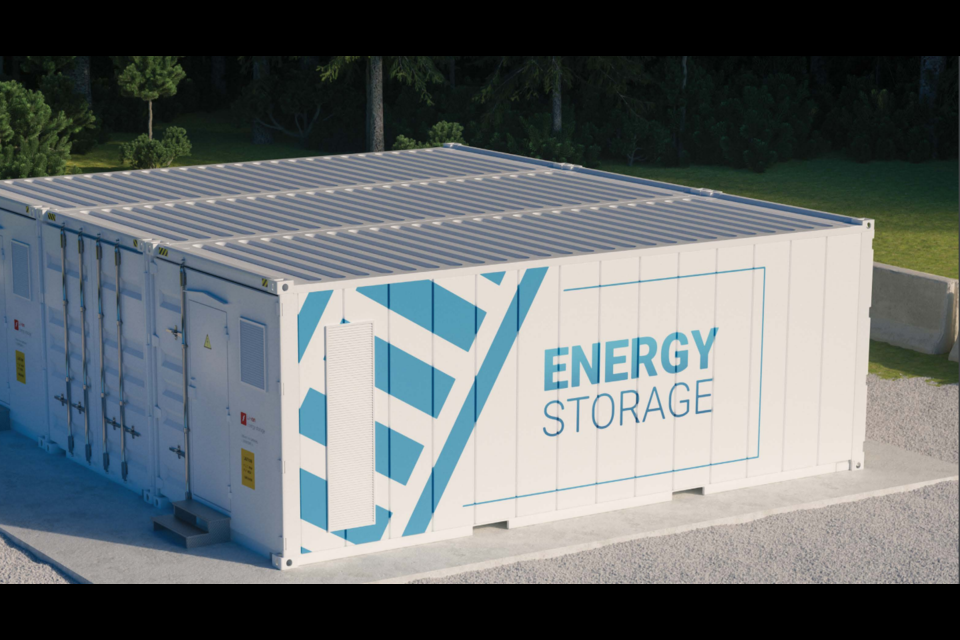East Gwillimbury farmer Emil Yeghiaian believes in protecting the Greenbelt.
A Greenbelt farmer himself, he often sells his crops at the Newmarket Farmers’ Market. He said he sees the importance of protecting the agricultural land concentrated in the Greenbelt from development.
So when he saw a power storage facility proposed in his community using agricultural Greenbelt land, Yeghian was moved to take action.
“It’s the Greenbelt, that’s it. To me, that is the end of the discussion,” he said. “There’s nothing wrong with power stations. I understand we have to build them for the future … (But) only 10 per cent of Ontario land can grow crops, 90 per cent can’t. Why are we building it on the 10 per cent that’s feeding our citizens?”
Northland Power is proposing a battery storage facility called Woodbine Energy Storage in East Gwillimbury. Located on farmland north of Newmarket between Highway 404 and Woodbine Avenue, the proposal includes battery storage enclosures, electrical inverters and transformers. The company is making a bid as the Independent Electricity System Operator (IESO) seeks proposals to help expand the power system, with the battery storage facility meant to help reliability by storing energy at lower usage times and then releasing it during peak times.
The company submitted the bid in December, getting the necessary support from East Gwillimbury council to at least make it to that stage in the process. The IESO will start to award contracts this year, and if this project does earn a contract, more formal municipal planning efforts would go ahead.
“We look forward to working together to bring to life the Woodbine Energy Storage Project, with mutually beneficial outcomes for Northland, the province of Ontario, and for local and Indigenous communities,” Northland Power said on its website.
NewmarketToday did not receive a reply to a request for comment before the publication deadline.
The company has held a couple of public meetings to get feedback and explain the project to the community. Yeghiaian said he and many others remain concerned by it and the possible impacts it could have.
“That location is on a farm,” Yeghiaian said. “We’re destroying our very few, little amount of precious farmland to build something.”
He added that although proponents might argue it is not a relatively large area — about 10 acres — he said that when it comes to protecting farmland, “it doesn’t matter if it’s one metre. All that matters is once they start destroying the Greenbelt, when are they going to stop?”
East Gwillimbury council backed the proposal enough to get points for its bid to the IESO, but the approval did not extend beyond that.
“Council’s potential municipal support resolution is “in principle” support, and if this proposal is approved by the IESO, local planning process still applies for technical review and approval,” a Dec. 5 staff report said. “The facility is proposed within the Greenbelt, which allows for utility uses. This would also limit adjacent homes or commercial/industrial facilities to the proposed use.”
The report notes Northland Power would still allow for agricultural uses on the property, except for the land required for the battery storage facility.
Environmental Defence program manager for land use Phil Pothen said the organization sees the need for battery storage facilities as part of provincial efforts to stop using fossil fuels. But he said the IESO should support proposals in already designated greenfield areas if at all possible, over Greenbelt projects.
“There does not seem to be any requirement that battery storage facilities be located outside of existing, designated greenfield areas, industrial, of which East Gwillimbury and every municipality in the region has a significant amount of,” Pothen said.
However, he added that the scale of such a facility is significantly smaller than some of the larger incursions into Greenbelt lands, such as Highway 413 and sprawling residential development.
Pothen further said that battery storage facilities also exist in the form of wind farms and solar farms, which he said can co-exist with other uses in the Greenbelt.
The IESO should ensure rules are clear to avoid unnecessary Greenbelt projects, Pothen said.
Yeghiaian said that the community in the area is largely opposed to the project and he is doing everything he can to prevent it.
“It does not affect me personally, but it does because that is my community. This is the Greenbelt. I live in the Greenbelt and work in the Greenbelt and farm in the Greenbelt, because it’s a moral thing to do, and they’re trying to destroy that,” he said.



